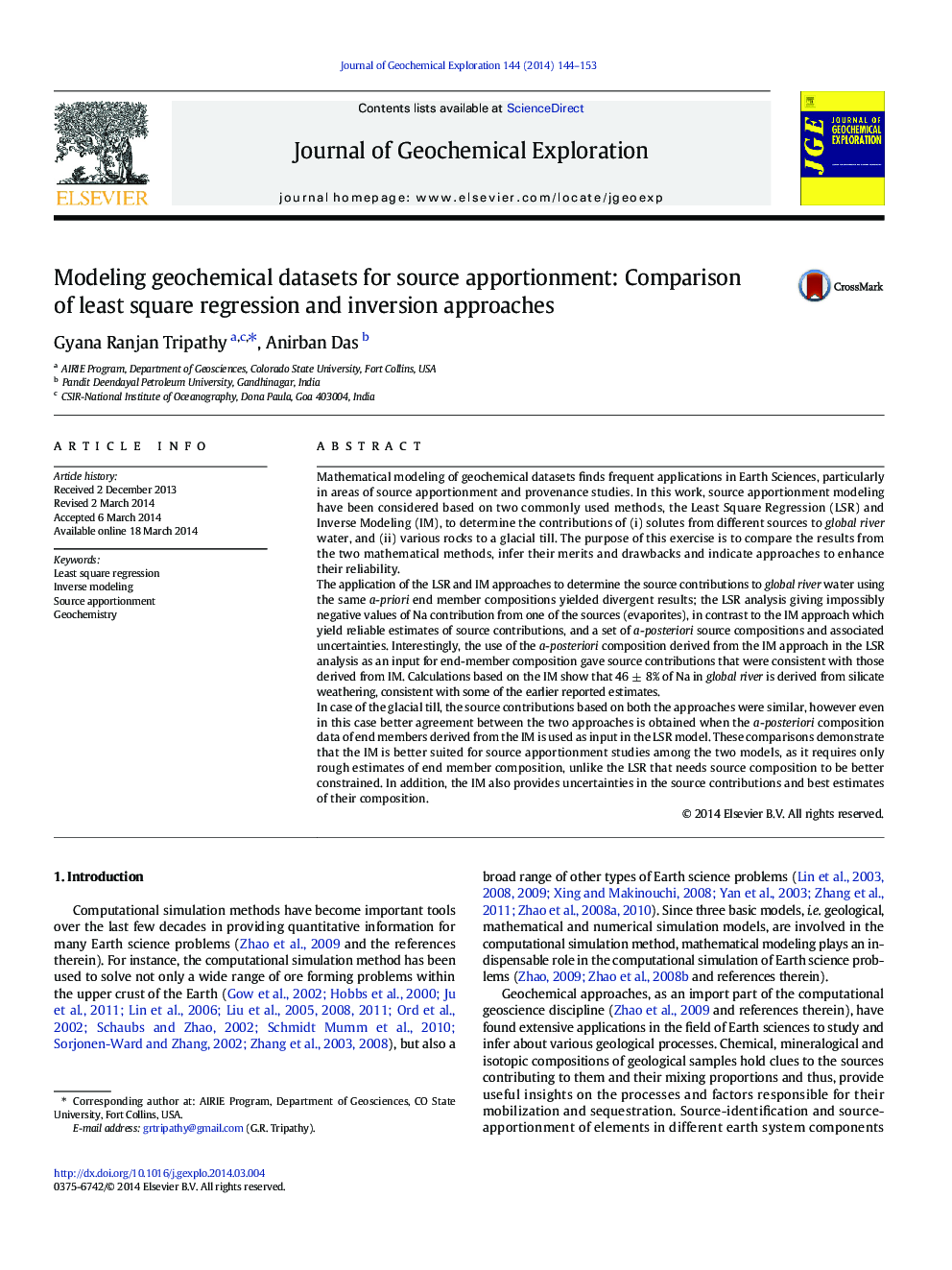| کد مقاله | کد نشریه | سال انتشار | مقاله انگلیسی | نسخه تمام متن |
|---|---|---|---|---|
| 4457262 | 1312600 | 2014 | 10 صفحه PDF | دانلود رایگان |
• Comparison of source-apportionment results using least square and inversion methods.
• Case studies involving geochemistry of river water and glacial till are considered.
• Inverse model seems to yield more precise estimates and associated uncertainties.
• Effectiveness of least square requires precise information on source compositions.
Mathematical modeling of geochemical datasets finds frequent applications in Earth Sciences, particularly in areas of source apportionment and provenance studies. In this work, source apportionment modeling have been considered based on two commonly used methods, the Least Square Regression (LSR) and Inverse Modeling (IM), to determine the contributions of (i) solutes from different sources to global river water, and (ii) various rocks to a glacial till. The purpose of this exercise is to compare the results from the two mathematical methods, infer their merits and drawbacks and indicate approaches to enhance their reliability.The application of the LSR and IM approaches to determine the source contributions to global river water using the same a-priori end member compositions yielded divergent results; the LSR analysis giving impossibly negative values of Na contribution from one of the sources (evaporites), in contrast to the IM approach which yield reliable estimates of source contributions, and a set of a-posteriori source compositions and associated uncertainties. Interestingly, the use of the a-posteriori composition derived from the IM approach in the LSR analysis as an input for end-member composition gave source contributions that were consistent with those derived from IM. Calculations based on the IM show that 46 ± 8% of Na in global river is derived from silicate weathering, consistent with some of the earlier reported estimates.In case of the glacial till, the source contributions based on both the approaches were similar, however even in this case better agreement between the two approaches is obtained when the a-posteriori composition data of end members derived from the IM is used as input in the LSR model. These comparisons demonstrate that the IM is better suited for source apportionment studies among the two models, as it requires only rough estimates of end member composition, unlike the LSR that needs source composition to be better constrained. In addition, the IM also provides uncertainties in the source contributions and best estimates of their composition.
Journal: Journal of Geochemical Exploration - Volume 144, Part A, September 2014, Pages 144–153
